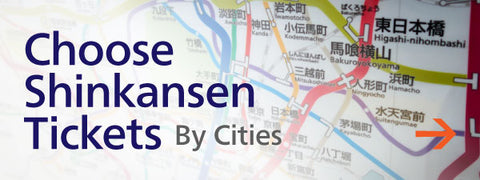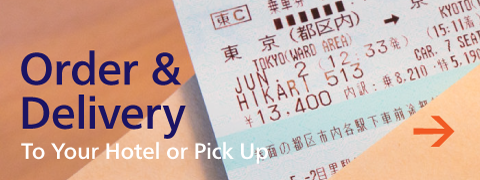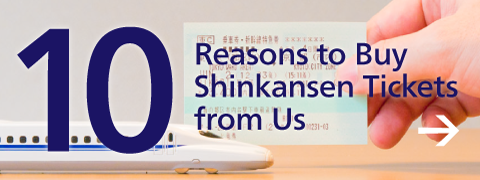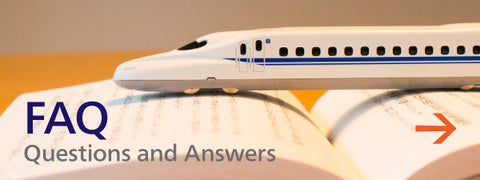How to Use Public Transportation in Japan
Published on April
Last updated on June 25, 2025
Using public transportation in Japan is highly convenient for visitors. For example, Tokyo boasts an extensive network of trains, subways, and buses that connect all major areas efficiently. These services are frequent, reliable, and easy to use, with signage and announcements often available in English.This page explains how those planning to visit Japan can use the public transportation system in Japan, especially in Tokyo.
Contents
- Rail & Subway
- Bus
- Taxi
- The Convenience of Using SUICA (Prepaid IC card)
- How to Purchase SUICA
- Welcome SUICA
- How to Use Welcome SUICA
- Important Points About Welcome SUICA
- FAQ
Rail & Subway
Riding trains and subways is the same everywhere in Japan. However, the complexity of the lines varies from city to city.
Tokyo's rail and subway networks are among the most complex in the world, often confusing even local Japanese during transfers. This vast and intricate network encompasses numerous lines operated by different railway companies, frequently requiring transfers across lines managed by different operators. Foreign tourists might find navigating these systems a bit daunting.

Purchasing and Using Tickets
- Ticket Purchase: Tickets can be bought at station vending machines by selecting your destination on the screen and paying the displayed fare. These machines often support multiple languages, including English, Chinese, and Korean.
- Entry and Exit: Insert your purchased ticket into the ticket gate to enter and exit the train stations. If your ticket is not sufficient to cover the journey, you can pay the difference at a fare adjustment machine before you exit.
Using One-Day Passes
- One-Day Passes: Various railway companies offer one-day unlimited travel passes, which are economical, especially if you plan to visit multiple locations in a day. There are passes specific to subways and others that are valid for both JR lines and subways.
Bus
The way of riding buses is similar everywhere in Japan.
In Tokyo, taking the bus is a practical and economical way to explore parts of the city that are less accessible by train. Here's a straightforward guide on how to ride buses.

Locating Bus Stops
- Finding Stops: Tokyo bus stops are marked with signs showing the routes and destinations. You can find them near train stations, major intersections, and popular areas.
- Bus Route Maps: Detailed maps at the bus stops display the route, major stops, and the schedule. These are usually in Japanese, but key locations may also be indicated in English.
Boarding the Bus
- Boarding Process: Passengers usually board the bus from the front door and exit through the rear door. However, this can vary, so it’s important to follow what other passengers do or check the signs on the doors.
- Payment: Pay when you board. Buses in Tokyo typically require you to pay a flat fare as you enter. Fares can be paid in cash or with a transportation card like SUICA .
Taxi
Using taxis is a convenient option for getting around, especially when traveling to areas less accessible by public transport or when carrying heavy luggage. Here’s a guide on how to use taxis in Tokyo.

Hailing a Taxi
-
Taxi Stands: You can find taxis at designated stands near major train stations, hotels, and tourist spots.
-
On the Street: It’s also common to hail a taxi directly from the street. Look for taxis with a lit-up sign in the front window—this indicates that they are available for hire.
Using a Taxi
- Getting In: Open the left rear door to enter the taxi; it will open automatically in most cases, as many taxis in Japan feature automated doors.
- Communication: Most taxi drivers in Japan speak limited English, so it is helpful to have your destination written in Japanese or saved on your phone. You can also use a translation app to communicate your destination to the driver.
- Fares: Taxis in Japan start with a base fare, which covers the first few kilometers, and the fare increases with distance. Fares are higher late at night until early morning.
- Payment: You can pay for your taxi fare in cash, by credit card, or using a prepaid transportation card like SUICA.
The Convenience of Using SUICA (Prepaid IC card)
More convenient than any of the above methods is the use of the contactless IC card such as "SUICA", "PASMO", "ICOCA", and "TOICA". After purchasing and charging your SUICA, it can be used across almost all public transportation in Japan, including JR lines, private railways, subways, and buses. Simply touch the card against the reader at ticket gates to complete both entry and exit, automatically deducting the correct fare for your journey. SUICA eliminates the hassle of purchasing tickets at vending machines.

For bus travel, a simple tap of the card near the fare machine when boarding or alighting is all that is needed to pay your fare.
Using SUICA streamlines the process of navigating Tokyo's complex public transportation network, ensuring a smoother and more efficient travel experience.
Additionally, SUICA is not only limited to transportation; it can also be used in various dining and retail outlets, including vending machines. You can pay with SUICA at many eateries such as cafes, restaurants, and izakayas. It is also accepted in convenience stores, pharmacies, souvenir shops, and supermarkets. Moreover, many vending machines across Tokyo support payment with SUICA, making it an incredibly convenient option for travelers looking to streamline their payment process while exploring Japan.
How to Purchase SUICA
SUICA is currently not for sale.
Due to the global semiconductor shortage, production of SUICA cards has become difficult, and sales have been discontinued since June 2023. They are also unavailable for purchase at JR stations within Japan.
As an alternative to SUICA, Welcome SUICA, which is exclusively for those visiting Japan for short-term travel or business, is available for purchase.
Welcome SUICA

Welcome SUICA is a Suica card designed for foreigners visiting Japan, and it does not require the usual 500 yen deposit needed for a regular Suica. Instead, it has a usage limit of 28 days, but its functions are the same as a regular SUICA.
There are three types of Welcome SUICA, each with different passes included:
- Welcome SUICA with JR lines 1-day pass includes a one-day unlimited travel pass for JR lines within Tokyo's 23 wards
- Welcome SUICA with Narita to Tokyo JR lines 1-day pass includes a ride on non-reserved seats on local and rapid trains from Narita International Airport to Tokyo Metropolitan District. It can be used for the Narita Express train by purchasing a limited express ticket (no need to purchase fare ticket).
- Welcome SUICA with Haneda to Tokyo JR lines 1-day pass includes a ride on Tokyo Monorail from Haneda Airport to Hamamatsucho in Tokyo's 23 wards
How to Purchase Welcome SUICA
Welcome SUICA can be purchase at Haneda Airport Terminal 3 station in Japan only. It is currently NOT AVAILABLE for purchase at stations, such as Tokyo, Shibuya, Shinjuku, Yokohama, Ikebukuro, and any other stations.
However, you can purchase online from the links below:
- Welcome SUICA with JR lines 1-day pass
- Welcome SUICA with Narita to Tokyo JR lines 1-day pass
- Welcome SUICA with Haneda to Tokyo JR lines 1-day pass

How to Use Welcome SUICA
Using Welcome SUICA does not require complicated procedures, but activation at the JR East station* is necessary.
*Activation can be done at JR station within JR East Japan area, such as Tokyo, Shinagawa, Shibuya, Shinjuku, Ikebukuro, Yokohama, and Narita.
1. Activation
[For first-time train use]
- Simply touching the Welcome SUICA at the station's ticket gates completes the activation procedure.
- If traveling beyond the pass area, charging the Welcome SUICA is necessary. This can be done at a ticket vending machine before entering the gates or at a fare adjustment machine before exiting the gates after the journey. Follow the instructions on the machine screen and charge using cash.
[For first-time shopping use]
As Welcome SUICA does not come pre-charged, charging is necessary before use for shopping.
- Charging can be done with cash at JR East Japan station's ticket vending machines. The activation procedure completes simultaneously with the charging.
- The day pass becomes active on the day of charging. Note that the day pass is only valid on the day of the first charge.
2.Charging Welcome SUICA
Since the Welcome SUICA is not pre-charged, charging is necessary for shopping, train rides beyond the 1-day pass area, subsequent train rides after using a1-day pass, and for bus or taxi rides.
- Charging can be performed at station ticket vending machines and convenience stores. Once Welcome SUICA use is activated, charging is also possible at private railway and subway stations outside of JR East Japan area, as well as at convenience stores.
- For charges at station vending machines, follow the on-screen instructions.
- For convenience store charges, it is necessary to inform the clerk that funds are to be added to the Welcome SUICA.
Important Points About Welcome SUICA
JR lines 1-day Pass:
- The 1-day pass is valid for a single day (until the last train) on the day you activate the card at a JR multifunction ticket vending machine within the Tokyo 23 wards area, or on the day you charge it within the JR East Japan area.
- PLEASE NOTE that the pass is valid only for the day you activate and NOT for a full 24-hour period from the activation.
- Tokyo Metro and other subway lines are not covered by the pass. Please visit the link below for the area covered by the pass:
https://www.jreast.co.jp/multi/welcomesuica/img/sp_pass03.png
*For more detailed information about the 1-day pass, please refer to the official JR website:
https://www.jreast.co.jp/multi/en/welcomesuica/with_ic_special_pass.html
The "Tokyo Metropolitan District Pass (Tokunai Pass) mentioned in the JR official page description corresponds to this product.
Charging Welcome SUICA:
- The Welcome Suica with JR lines 1-day pass does not come with an initial charge.
- PLEASE NOTE that the start of usage (activation) is limited to the JR East Japan area. You cannot start your charging function outside Tokyo metropolitan areas, such as Osaka, Kyoto, Hiroshima, and other major cities outside Tokyo.
- You can add money to your card at ticket machines in stations or at convenience stores across Japan (balance limit: 20,000 JPY).
- You can use this card solely for charging purposes and can choose to waive the use of the 1-day pass.
- The card remains valid for 28 days from the initial use.
FAQ
Q: Can I use Welcome SUICA outside of Tokyo?
A: Yes. While you must start using the Welcome SUICA in the JR East Japan area, such as Tokyo and its surrounding regions, once activated, it can be used anywhere that accepts SUICA, including Kansai, Hokkaido, and Kyushu.
Q: What is the difference between SUICA and PASMO?
A: The primary distinction between SUICA and Pasmo lies in their issuing entities. Both are transit-oriented IC cards, enabling seamless interoperability across services. Users can leverage either card for a comprehensive range of activities throughout Japan, encompassing travel on trains, buses, and taxis, as well as making purchases in convenience stores, supermarkets, restaurants, cafes, pharmacies, and souvenir shops.
What is shinkansen-ticket.com?
Shinkansen-Ticket.com is a Japan-based travel agency specializing in booking Shinkansen and limited express train tickets—including high-demand routes that are often difficult to secure. With nearly a decade of experience, we’ve built a reputation for reliable, flexible, and traveler-friendly service.
We provide both QR code-based tickets for easy station access, ideal for last-minute bookings, and physical paper tickets, which can be delivered to your home abroad, hotel, major post offices, or even a friend’s residence across Japan—perfect for carefully planned itineraries.
Our expertise in Japan’s rail system allows us to offer customized support with a deep understanding of routes, connections, and seating options—including oversized luggage seats, scenic views, and group arrangements.
Trusted by thousands of repeat customers and partnered with numerous hotels and travel agencies, we regularly assist in arranging train tickets for hotel guests and tour clients across Japan.




